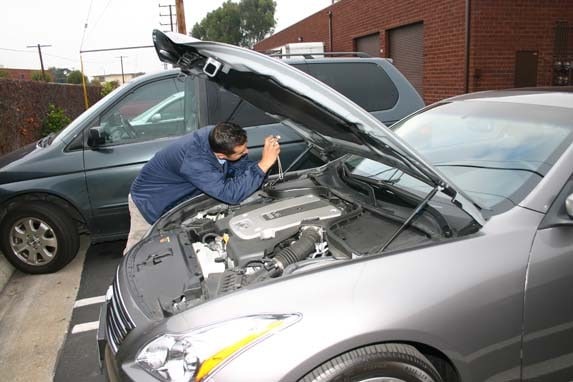
Is the fuel-injection cleaning sold by many independent garages and dealerships a sound investment in your vehicle, or a marginally beneficial service pushed on consumers to fatten profits?
Fuel-injection service is part of a bigger trend in automotive maintenance that includes such procedures as flushes for crankcases, power-steering pumps and cooling systems, as well as for differentials and other lubricated parts.
How are you supposed to react when a service advisor tells you that your throttle body needs to be cleaned at a cost of $80? Or that your intake manifold is so dirty that it is causing performance loss and poor fuel economy?
Things to consider
Before you shell out a dollar on any of this stuff, it would be useful to know something about fluid changes and the cost of these exotic flushes.
If you read your owner’s manual carefully-something most motorists never do-you will probably find no recommendation or even a mention of a power-steering flush or fuel-injection service or any of those other expensive cleanings.
Generally, auto makers are trying to design mechanical systems that require far less maintenance, not more. That has given rise to 100,000-mile tune-up intervals on many new models, elimination of transmission fluid changes and far less frequent oil changes.
Who do you trust?
So auto makers are telling owners they don’t need to spend as much to take care of their cars and trucks. But some dealerships are saying almost the opposite: that you need more than ever to flush out dirty fluids frequently or run the risk of major repair bills.
It would be nice if auto makers said in huge letters in their owner’s manuals: "Don’t flush out the fluid in your power-steering pump because, if it were important, we would tell you ourselves."
Nobody wants to be a chump who pays for something unneeded, but sometimes a flush is a good idea. Power-steering pumps, for example, are incredibly expensive to replace, and clean fluid can help prevent a breakdown. On the other hand, lots of vehicles have power-steering pumps that can go 200,000 or 300,000 miles without any hassle.
Cleaner fuels, new tech trump flushes
Fuel-injection cleaning actually makes less sense than it did about 12 years ago, when the injection systems started to replace carburetors. At that time, poorly formulated gasoline and badly designed injector nozzles caused a lot of fouled and plugged injector tips. But that’s far less the case today.
Unless you have a specific performance problem, your car or truck almost certainly does not need any of these services before 60,000 miles, if ever.
If you want to aggressively maintain your vehicle, you should change the oil every 3,000 miles and the transmission fluid perhaps every 35,000 miles. It also makes sense to change the antifreeze every year and the brake fluid every 60,000 miles.
Keeping accurate records of your vehicle’s fuel economy, measured over three or four tankfuls of gasoline, can be helpful. Then if you suspect a problem, you can recheck it and see if your car’s performance is actually degrading.
















